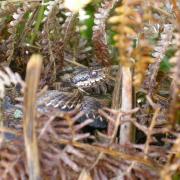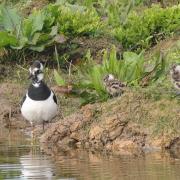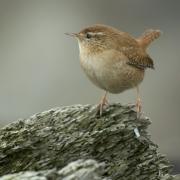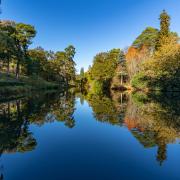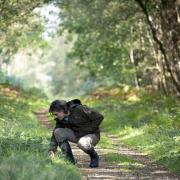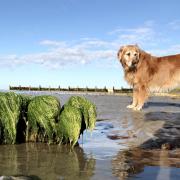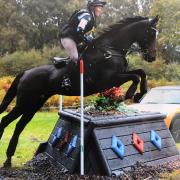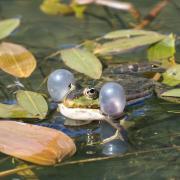Beavers will return to Sussex for the first time in 400 years as part of a trial in West Sussex
Britain’s beaver population was lost more than 400 years ago, hunted to extinction for the fur trade. Now these helpful herbivores are being hailed as a valuable weapon in the fight against climate change.
Current legislation means that beavers can only be released in England into large enclosures under licence from the Department for the Environment, Farming and Rural Affairs (Defra). As well as a wild colony living along the River Otter in Devon – believed to originate from escapees from a private collection – closely monitored beaver pairs are living in trial enclosures in North Yorkshire, Cornwall, Essex, Devon, Somerset and Gloucestershire. This year, beaver pairs will be returned to Cumbria, Norfolk and Dorset – and two sites in West Sussex. One is in Valewood, on the National Trust’s Black Down estate, and the other at the Knepp Estate near Horsham.
The Sussex Beaver Trial is a partnership led by Sussex Wildlife Trust and the rewilding project at Knepp. Landowners Isabella Tree and her husband Charlie Burrell have long been advocates of the potential for beavers to mitigate flooding and promote biodiversity. “We wanted wild boar, bison and beavers,” says Isabella, remembering the letter of intent they sent to the government in 2001, when they first planned to create a wilderness area on their land. Charlie felt so strongly about the importance of beavers’ role in restoring natural landscapes that he founded the Beaver Advisory Committee of England with the aim of fostering conversation between landowners and organisations such as the NFU, Environment Agency and Natural England. This work has now been taken on by the newly formed Beaver Trust.
The Knepp beavers will be released in two locations within a large enclosed area of the estate’s Southern Block for a five-year period to see how they settle into and adapt to their new environment. The animals will have more than 250 hectares of land (a beaver’s territory is around three), including extensive swathes of willow.
Sussex Wildlife Trust living landscapes advisor Fran Southgate says: “Beavers are what is known as a keystone species: the idea being that if you take out that species the whole eco-system below it collapses. Beavers are a keystone species for rivers and wetlands and their extinction will have had a major impact on our eco-systems and how they would function. Projects in Scotland have been starting to show what happens when you bring them back and the benefits that they can have. They have all sorts of positive impacts for other wildlife, but they are also a keystone species for what we call natural services: they purify water, store water in times of flood and in times of drought, they also store carbon and remove sediment from the water. They even have pollinator benefits because they increase vegetation.
“We have a natural flood management project in Sussex called Sussex Flow Initiative and one of the things we do is put wood back into rivers, particularly in woodland to slow the flow of the water so it stops barrelling down the river towards towns. We are just mimicking what a beaver would have done in the past.”
Fran says that there’s a general recognition that over the past century we have tended to over-engineer our river systems and landscapes. “Water companies and wildlife organisations have recognised that this doesn’t work any more and we have to start working with our natural environment to store water in places where there’s space for it and hope that stops flooding in places where there’s not.” Beavers’ natural behaviours – which include damming and coppicing – could provide at least a partial answer.
The UK has lost at least 80 per cent of its natural wetlands – Fran thinks it’s closer to 95 per cent in Sussex – and wetlands are important not just for their rich biodiversity but because of their huge potential as carbon sinks. “That is increasingly important if we are going to meet our carbon targets,” notes Isabella Tree.
The Knepp Estate site has great potential for wetland recovery, she continues: “It will be a fantastic habitat for them – we have significant expanses of sallow scrub, naturally hybridising willow which is what they eat, what they coppice and what forms their dams and lodges. There’s plenty out there to keep them going for, we hope, at least 10 years without them thinking of moving from there. There is also huge potential for wetland recovery. We hope they will make much more complex wetlands out of our land, creating little streams and rivulets. The whole thing will begin to hold back even more water than the re-wilding project does already – which is quite significant.”
The two West Sussex beaver releases are being monitored as part of a national project and under the advice of specialist ecologists. Despite having general public approval (a YouGov poll found 76 per cent of people support the idea) the reintroduction of beavers has met with some controversy. “Farmers are going to be worried about damage they might cause from flooding their crops,” says Isabella. “We have to have a system in place where if that happens you can call someone. There is this amazing appliance called a Beaver Deceiver [which regulate water levels in dams]. If that doesn’t work, which it usually does, you have to be able to translocate those beavers to somewhere you really want them.
“Ultimately I think landowners and managers need to be reassured that we will manage beavers in a way that will protect them from damage and loss of livelihood. Bavaria is one of the most managed farmed landscapes I have ever seen and they have 18,000 beavers there with no problems with farmers. I think it definitely can be done – we can live with beavers again – we just need to be pragmatic about it.”





